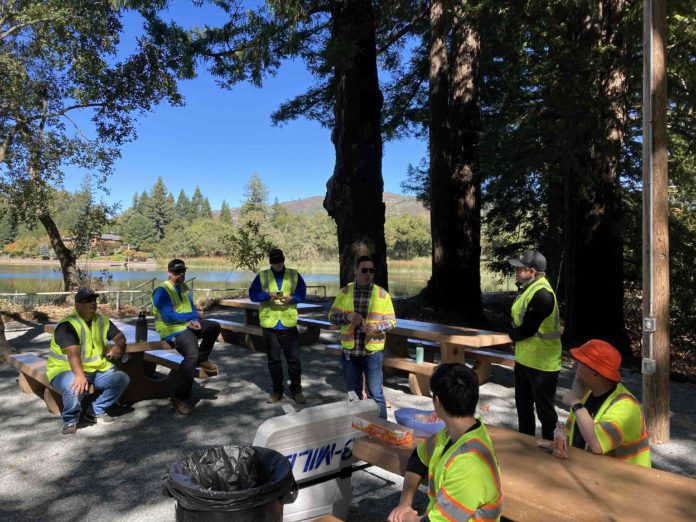
On Sept. 27, Eric W. Thornburg loaded up into a passenger van with his coworkers and headed out on a field trip into the Santa Cruz Mountains just above Lexington Reservoir.
The Saratoga resident just happens to be the CEO of SJW Group, a utility company that clocked net income of $32.4 million in just the first six months of 2024.
He was joined by Tanya Moniz-Witten, president of SJ Water Co., and several employees from different arms of the multi-pronged organization.
The goal was to give workers an on-the-ground look at the life-sustaining system they use to bring drinking water to local dining tables—a way to bring spreadsheets and data points to life.
What better way to do that than to head up into the Santa Cruz Mountains for an overview of the watershed that supplies Los Gatos and the surrounding areas with drinking water.
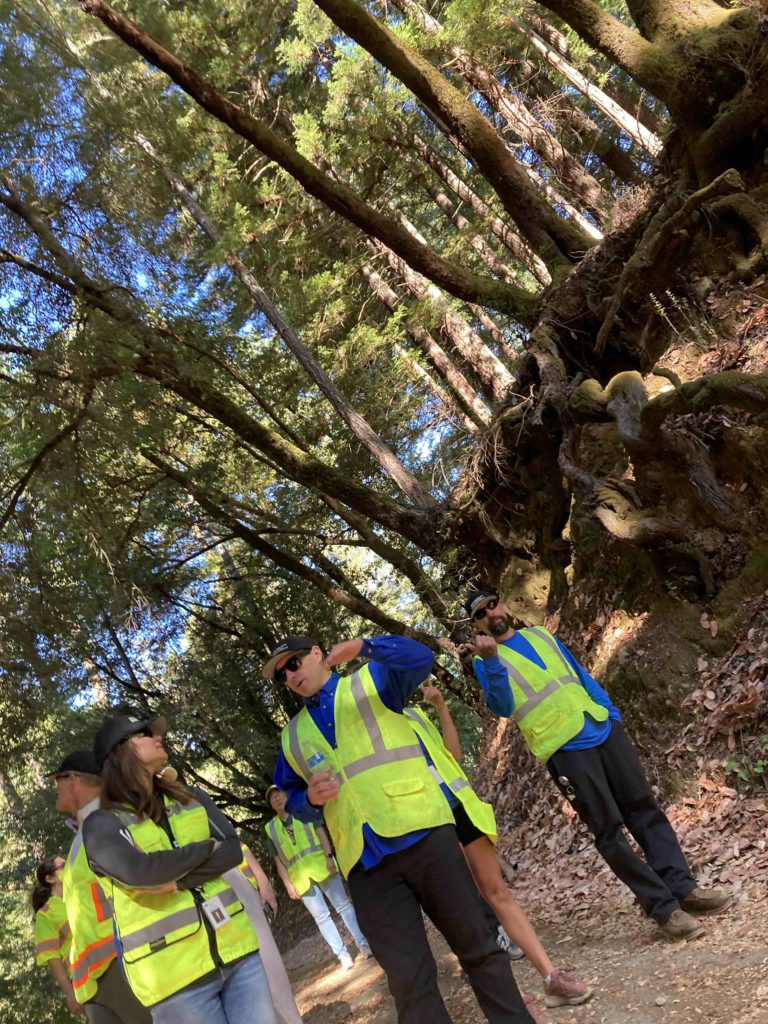
This is not foreign territory for Moniz-Witten.
“I do a weekly day in the field,” she said, explaining this helps her stay on top of the vast, technical organism she runs.
We spilled out of the bus onto flat terrain, where one of our tour guides welcomed us onto the terrain.
Jared Lewis, manager of environmental planning and natural resources told the employees the watershed is a kind of natural basin that collects water and directs it down Los Gatos Creek.
“Think of it as a bathtub,” he said.
“We did just have Watershed Month,” Director of Operations and Treatment Colby Sneed added, referencing the corporate initiative that hopefully meant much of what would be said on the tour would be reinforcement not new information for the team members.
We began to descend along a dirt road below towering trees.
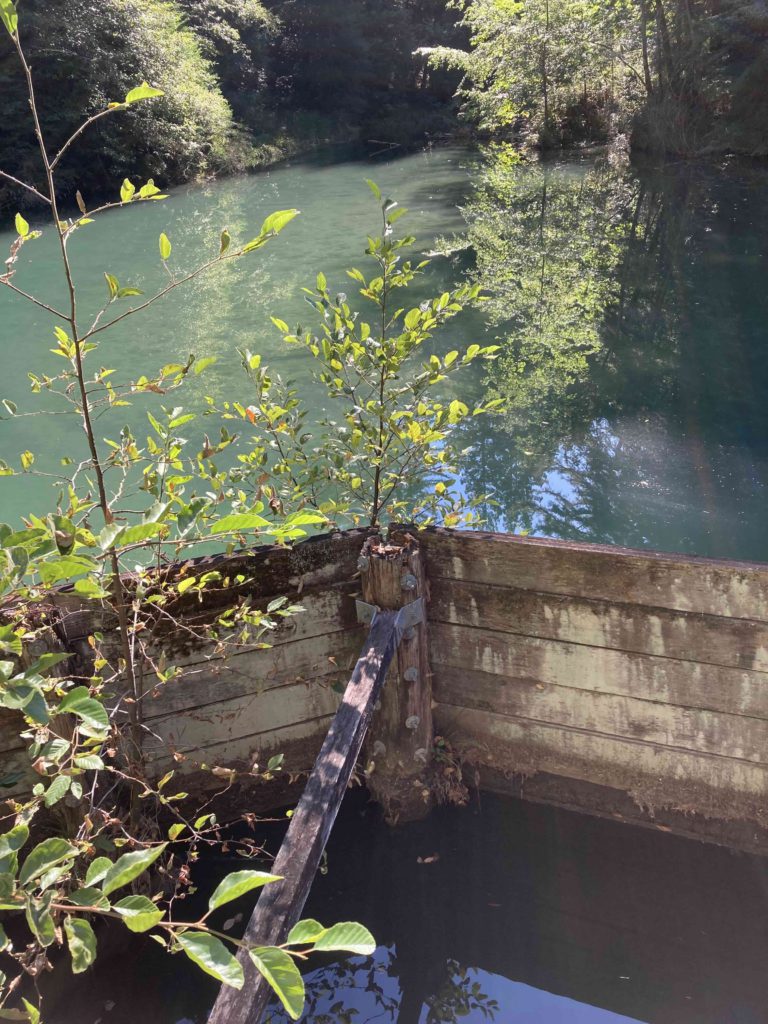
We arrived at a “balloon dam,” where water gets bypassed in order to maintain habitat, and which can be deflated or inflated depending on whether the water company wants more or less liquid to bypass the intake point located here.
Sneed pointed to a piece of equipment that beams information back to base about the state of the intake, meaning a human isn’t always required to come out to take readings anymore.
Later, the tour would learn about how two suspected arson-caused forest fires were halted quickly thanks to the new sensor network that was recently installed.
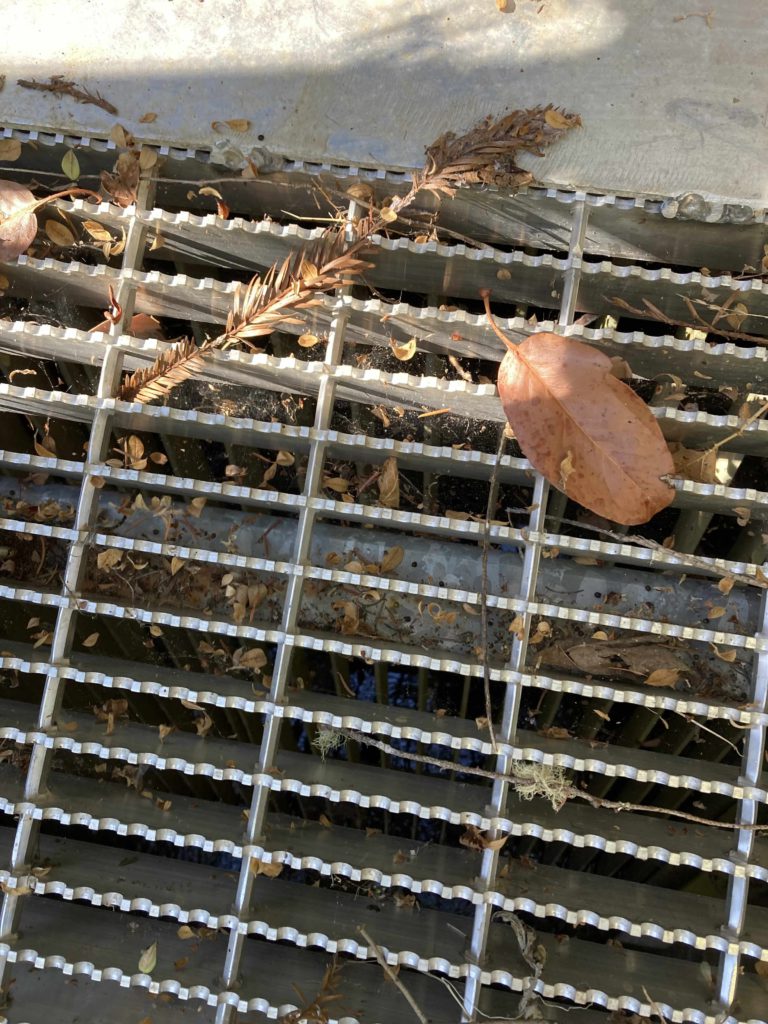
From March to June this year, SJW Group had an increase on water production expenses of $8.7 million compared to the same period the previous year.
The company saw a $3.1 million decrease in administration costs during that time period.
This year, SJW Group plans to spend $332 million on capital projects. It says it’s investing more than $1.6 billion over the next five years “to build and maintain its water and wastewater operations, including approximately $230 million to install treatment for per- and polyfluoroalkyl substances (PFAS)—known as forever chemicals.
The company has proposed a three-year $540 million capital expenditure program focused on treating PFAS in drinking water, reducing greenhouse gas emissions and contributing to the California Public Utilities Commission’s Environmental and Social Justice Action Plan.
SJ Water officials declined to discuss the impact of PFAS on the Los Gatos Creek watershed with the Los Gatan.
Just before clambering up the intake, we got an overview of the mix of water in this particular corner of SJW Group’s water portfolio.
First of all, half of the water sent to taps is imported—sold to SJ Water by Valley Water, the regional water distributor.
About 40% comes from groundwater—and is much cheaper than purchasing product (though they have to pay for treatment chemicals).
Sneed said he doesn’t feel Valley Water sets their prices in a way that incentivizes the utility too heavily in one particular direction.
Finally, one-tenth of the local water mix comes from surface water.
Our guides explained how the balloon dam is lowered in times of stormy weather, allowing chocolate milk-esque waves to pass by the intake.
We got to see how leaves and other debris are kept out of the stream sent to the Montevina Water Treatment Plant.
At the end of the tour, we headed across Highway 17 to a picnic area near two lakes that essentially serve as back-up water sources—one containing 80 million gallons, the other with 50 million gallons.
SJ Water employees are allowed to reserve the shaded, relaxed space. One said they recently held a gathering at the location.
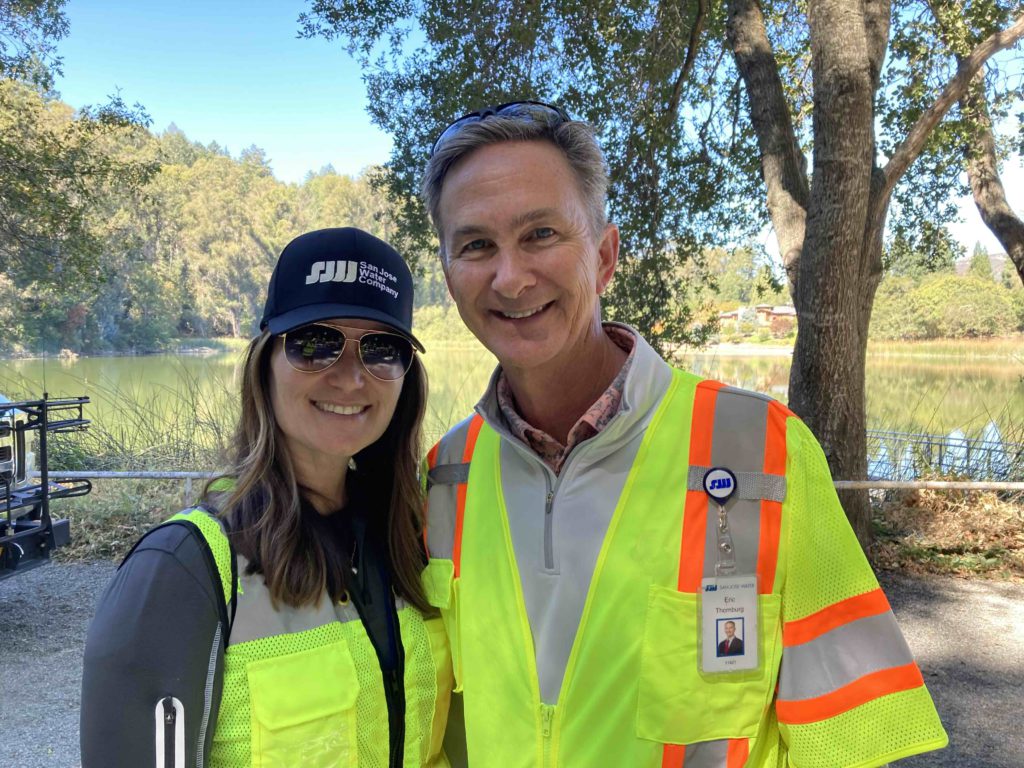
Totran Mai, 39, is a GIS manager for SJ Water and group subsidiary The Texas Water Company.
“I think it’s incredible to see that this is part of our system,” she said. “I signed up for the tour to see what our other colleagues are doing.”
Mai said it was pretty interesting to see how other departments are using their maps.
“—otherwise I’m at my desk in the database all day,” she added.
Thornburg, the CEO, was pleased to see the employees connecting with the environment they’ve been tasked with managing.
“When we get people out into nature like this, there’s something magic that happens,” he said, characterizing water work as much more than a typical 9-to-5. “They take pride in giving back and maintaining the forest. I love to see people really switched-on by what they do.”









